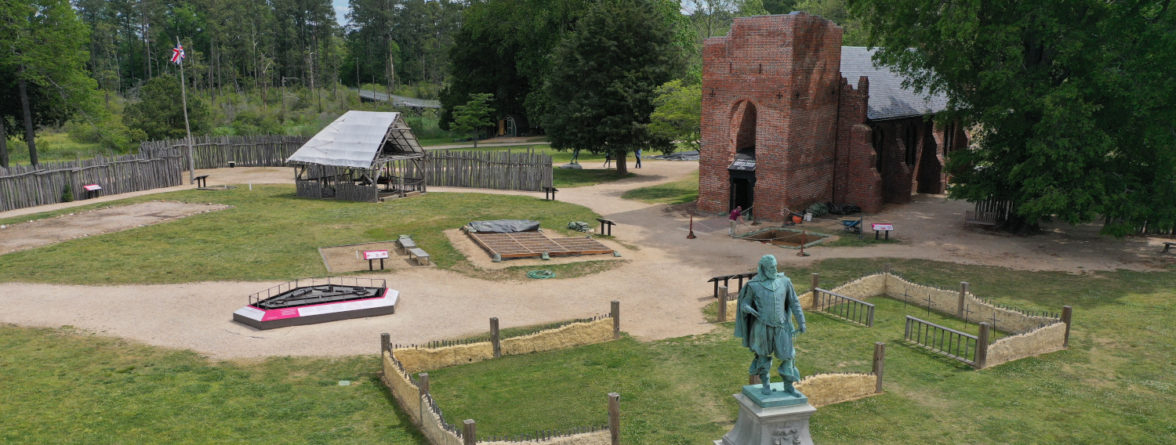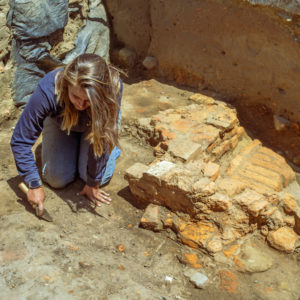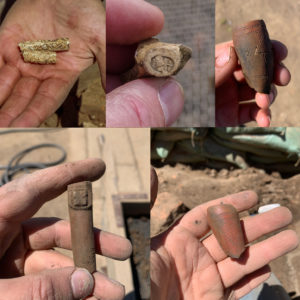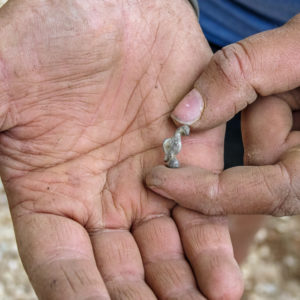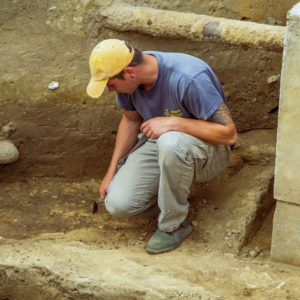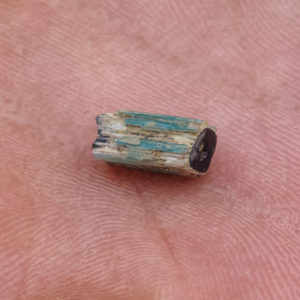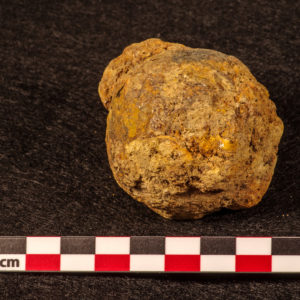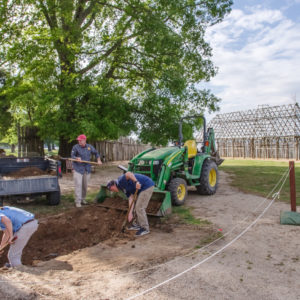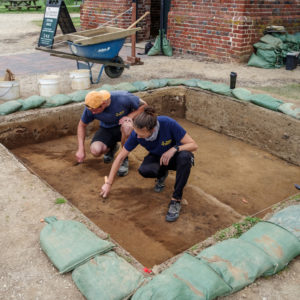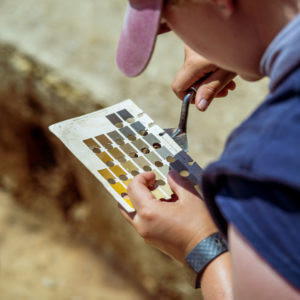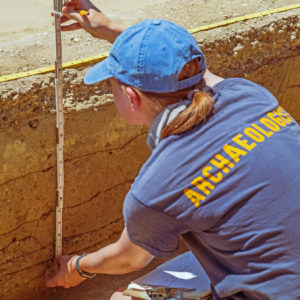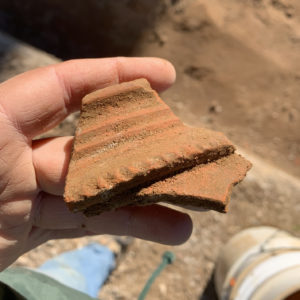As we move into summer, the crew is ramping up excavations for a productive season. All of our tests into features at Ditch 8 have been completed, so now all that is left is to fully backfill the entire area. Our current dig sites now consist of the Seawall units and our new units west of the church tower.
Each day at the Seawall, bags of artifacts are found within the midden that we have been chasing for the past couple months. This trash pit has many layers, dating from around the second quarter to the late 17th century. Test Unit JR4550 to the west has tested furthest into the trash dump so far, uncovering a host of interesting artifacts. A variety of local, and European tobacco pipes were found, as well as pottery from as far as Italy. One of the most exciting artifacts discovered was a tiny silver bird, intricately carved and perched with its wings pulled back. The bird is a finial, which possibly would have stood on a lady’s hairpin.
Test Unit JR188 to the east is also now fully atop the midden. Although we have only just begun digging the midden in that space, we have already found a 3 lb cannon ball which would have been fired out of a falconet (a light cannon). This is not the first time we have excavated in JR188. Around 2000, a small space was excavated in the middle of the unit, providing us with a full profile (view of the stratigraphy) of the midden in this area. That sneak-peak into each layer has helped us plan out how we want to remove each deposit, and allowed us to dig it out faster, since we already know where each break in the soil is.
After we finished at Ditch 8, we began excavations in a completely new space. At the very beginning of May, we opened up a few test units just southwest of the church tower. In 2019, lights were put into the ground in this space, in order to illuminate the church tower at night. While digging test holes for the lights, we noticed a layer of carbon-rich soil (~2” thick) that could only have originated with a large fire, as well as thermally-altered soil just below. We always planned on investigating further, and have finally been able to open larger excavations in this area. The presence of this burning event right by the church is interesting – could it be evidence of Bacon’s Rebellion in 1676? Primary records state that the church (among multiple other buildings in Jamestown) were burned down during that conflict, and its possible we are seeing evidence of the church fire. Of course, there were several other fire events on the island, so analyzing the artifacts we find will give us a better idea of exactly what this burning is related to.
So far, we have uncovered several post holes in our first test unit. A couple are more recent: in the early 20th century, there was a barbed wire fence supported by timber posts. Others appear to be historic, but we will not have a solid date range for them until we test into them. Some exciting finds also came out of the layer directly above the burning in this unit. A wine bottle base (dated to the 3rd quarter of the 17th century) as well as Morgan Jones pottery (c. 1677) indicate that this layer was deposited after Bacon’s Rebellion in 1676. Further excavation and artifact identification will allow us to narrow down the date range for the burned deposit.
related images
- Staff Archaeologist Nicole Roenicke trowels the midden in her test unit.
- Several of the pipe fragments found in the midden by the Seawall. Included are local pipe stems and bowls (made with red clay), as well as ornately decorated pipe stems imported from Europe (made with white clay).
- Found while screening through midden fill in Test Unit 4550. This silver bird may have capped a lady’s hairpin.
- Staff Archaeologist Ryan Krank trowels the midden at the bottom of JR188 by the Seawall.
- A Nueva Cadiz bead found while excavating through a section of midden in Test Unit 188.
- The small, 3lb cannon ball of a falconet found in the midden down by the Seawall.
- The three test units we have opened up right by the church tower.
- Director of Archaeology Dave Givens and Senior Staff Archaeologists MA Richardson and Sean Romo dig out the gravel and backfill in the first tower test unit.
- Staff Archaeologist Ryan Krank and Sit Supervisor Anna Shackelford clean one of the tower units for an overhead record shot. The black splotchy soil is the burning that was visible in the shovel test for the tower light.
- Archaeologist Caitlin Delmas records the Munsell colors of the soil in the notes for each layer and feature. Comparing the soil color to the hues in the book allows us to keep the colors consistent throughout our notes.
- Archaeologist Natalie Reid records the soil profile for one of the tower units. After its completion, the balk between the units was removed.
- A large sherd of Morgan Jones (c. 1677) found just above the burned layer in the tower units.
- Two partial projectile points found within the burned layer in the tower units.


